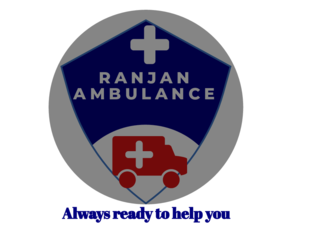
Ambulance Service in Nalanda: Ensuring Timely Medical Assistance
Introduction
Nalanda, located in the state of Bihar, India, relies significantly on its ambulance services to provide essential medical transport during emergencies. This article explores the operational framework, challenges, and impact of ambulance services in Nalanda, emphasizing their critical role in the healthcare ecosystem of the region.
Overview of Ambulance Services
Ambulance services in Nalanda are managed through a collaborative effort involving government agencies, private healthcare providers, and non-governmental organizations (NGOs). These services are essential for transporting patients swiftly and safely to healthcare facilities, ensuring timely medical intervention. The ambulances available in Nalanda cater to various medical needs and emergency response capabilities:
Types of Ambulances
Government Ambulances: Operated by the district administration, government ambulances are stationed at district hospitals, primary health centers (PHCs), and other strategic locations. They are equipped with basic medical supplies and staffed by trained paramedics who can provide initial medical care during transit.
Private Ambulances: Managed by private hospitals, NGOs, and sometimes individual initiatives, these ambulances vary in their equipment and capabilities. Some are equipped with advanced life support systems (ALS) and can offer quicker response times depending on the provider’s resources.
Operational Challenges
Despite their critical role, ambulance services in Nalanda face several challenges that impact their efficiency and effectiveness:
Infrastructure and Road Conditions: Many areas of Nalanda have inadequate road infrastructure, particularly in rural and remote locations. Poor road conditions, especially during monsoon seasons, can delay ambulance response times and hinder access to emergency sites.
Resource Constraints: Limited financial resources often restrict the availability of ambulances and necessary medical equipment. This can lead to delays in responding to emergencies and affect the quality of care provided during transit.
Staffing and Training: Paramedics and ambulance drivers require specialized training to handle medical emergencies effectively. However, the availability of trained personnel can be limited, particularly in rural areas, which can impact the ability to provide timely and appropriate medical interventions.
Impact on Healthcare Access
Despite these challenges, ambulance services in Nalanda have a significant impact on healthcare access and outcomes:
Emergency Response: Ambulances ensure prompt transportation of patients to healthcare facilities, which is crucial in reducing mortality rates associated with delays in medical care.
Maternal and Child Health: Ambulances play a vital role in transporting pregnant women to hospitals for safe delivery, thereby contributing to the reduction of maternal and infant mortality rates, especially in rural areas.
Trauma and Accident Care: Ambulance services provide critical medical interventions at the scene of accidents and trauma cases, stabilizing patients during transit to hospitals equipped to handle their specific medical needs.
Case Studies
To illustrate the significance of ambulance services in Nalanda, consider the following scenarios:
Accident Response: An ambulance responded promptly to a major road accident, providing immediate medical care to multiple injured individuals and transporting them to a nearby hospital for further treatment.
Emergency Childbirth: A pregnant woman in labor was transported by ambulance from her village to a hospital, where she received timely medical intervention and safely delivered her baby under professional care.
Cardiac Emergency: A patient experiencing a heart attack received critical medical attention in transit to a hospital with specialized cardiac care facilities, thanks to the advanced life support systems available in the ambulance.
Improving Ambulance Services
To enhance ambulance services in Nalanda, several measures can be considered:
Infrastructure Development: Investing in road infrastructure improvements can facilitate quicker ambulance access and reduce travel times, particularly in remote and underserved areas.
Capacity Building: Providing regular training programs for paramedics and ambulance drivers can enhance their skills in handling diverse medical emergencies effectively.
Technological Integration: Implementing GPS tracking and communication systems in ambulances can improve coordination, route optimization, and response times during emergencies.
Community Engagement: Conducting public awareness campaigns about the importance of timely medical intervention and how to access ambulance services can encourage prompt reporting of emergencies and improve overall healthcare outcomes.
Conclusion
Ambulance services in Nalanda are indispensable for providing timely medical care and improving healthcare accessibility across the district, despite facing various operational challenges. By addressing these challenges through strategic investments in infrastructure, capacity building, and technology, the district can enhance its emergency medical services and further improve healthcare outcomes. The impact of efficient ambulance services extends beyond saving lives; it contributes to a healthier community by ensuring that healthcare services reach those who need them most. As Nalanda continues to develop and prioritize healthcare infrastructure, the role of ambulance services will remain crucial in shaping the district’s healthcare landscape for the better.
